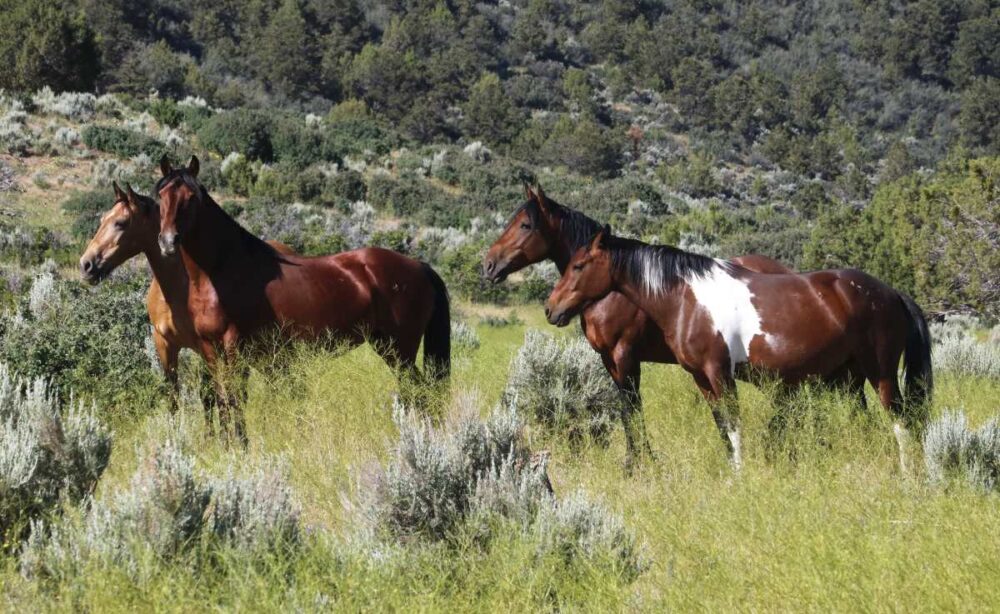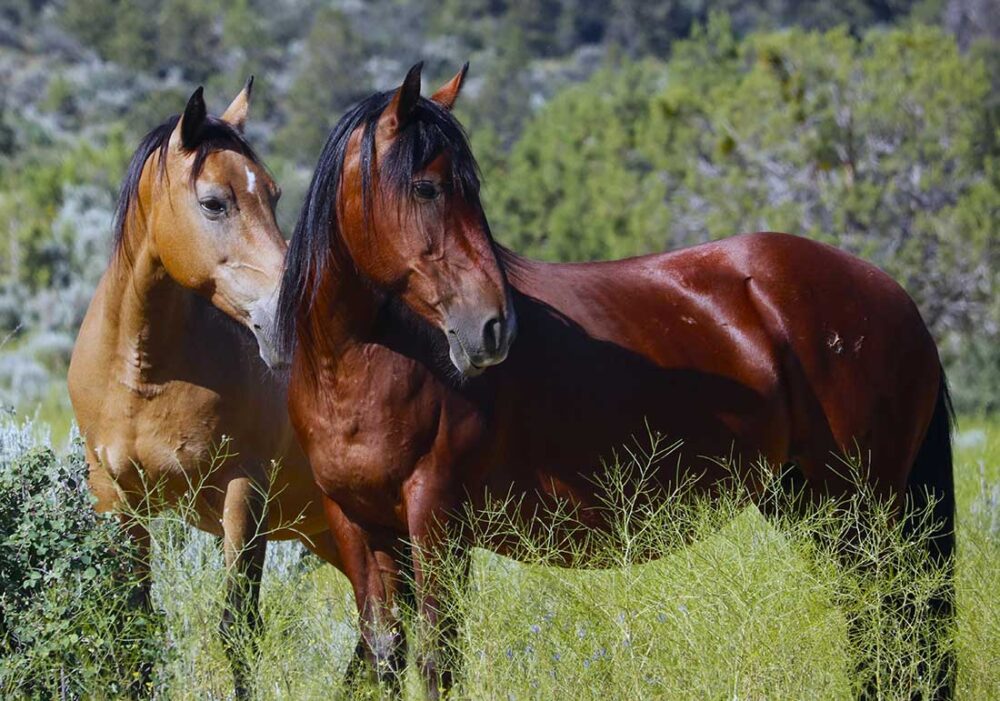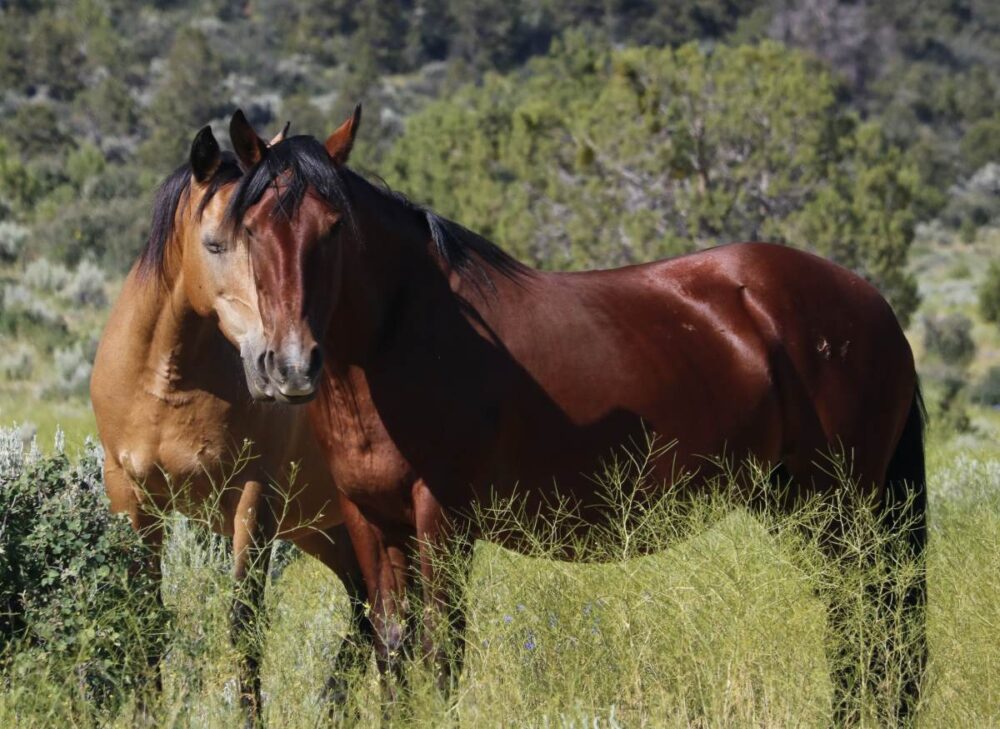“No one who conceives him only as a potential servant to man can apprehend the Mustang. The true conceiver must be a lover of freedom— a person who yearns to extend freedom to all life.” J. Frank Dobie
Little Book Cliffs Wild Horse Range* is the land of the free. Home of the beautiful and brave.
A dedicated range for wild Mustangs, Little Book Cliffs is located in northwest Colorado. This scenic 36,113-acre area is home to more than two hundred of North America’s native horses, including palominos, paints, bays, sorrels, roans, appaloosas and other breeds.

In the summer of 2022, I traveled to Colorado to photograph Little Book Cliff’s Mustangs. Several months before the trip, I connected with the Friends of the Mustangs (FOM) to help with my plans. Passionate advocates for Mustangs, this group of volunteers works with the Bureau of Land Management to assist them in their mandate to protect native wildlife. FOM projects vary. They remove old, dangerous barbed wire fencing on the range, reconstitute springs to provide water for the horses during the ongoing Colorado drought and more.
Billie, a long-term member of the FOM, had graciously agreed to be my photo guide. When we arrived at Little Books Cliffs the first morning, I was amazed at the surreal colors, shapes, and scale of the canyons and plateaus. Stunning, striated purple-rose-blue-peach prehistoric cliffs echo the range’s name. Pinion junipers, prairie grasses and sagebrush landscape the austere, yet serene terrain.
An expert driver, Billie navigated narrow, boulder-strewn roads flanked by cliffs and canyons in search of Mustang bands. As we maneuvered this rugged, otherworldly place, Billie shared that the horses had been elusive and difficult to find. Colorado’s extreme heat and drought were forcing them to lower canyons for food and water.
Suddenly quiet, Billie slowed down. She had spotted a band. We were still far enough away that the horses appeared small in the western-movie-like landscape. Still, my heart beat faster.
Billie drove further into the canyon. She stopped at the plateau’s edge where the horses were grazing, respectful of them and their land. In the center of the plateau, sparsely populated with trees that provided some shade from the searing sun, stood the band of a dozen or so.
While she waited in her truck, I put my camera backpack on and headed into the valley. A Cobalt blue sky was above me and red, yellow and violet mountain flowers were under my feet.
The closer I got to the horses, the more joy I felt.
I stopped to get my camera from my backpack, then walked closer. As I neared the Mustangs, I kept my movements calm, my demeanor subdued. I hoped to stay unnoticed. I wasn’t. They saw and observed me. With quiet peace, they acknowledged my presence. Because they didn’t move or run, I felt their acceptance.
The band of sorrels, bays, buckskins and paints stood together under the Colorado-bright sun. One of the horse’s coats flashed like burnished copper—not the color but the metal itself. A lone sorrel mare, with a blond mane and tail, sheltered under a solitary tree taking advantage of its minimal shade.
My camera, with its long lens, brought me so much closer, I felt I could touch them. Their soulful, spirited eyes looked through the lens into my heart. The sun not only shined on these special creatures but from them. I was happy just to watch these living breathing, symbols of freedom. P.T. Barnum said, “The noblest art is that of making others happy.” That day, I discovered Mustangs are not only ambassadors of freedom, but also artists of happiness.
While photographing these extraordinary animals, I saw, firsthand, what I had studied about them.
Family comes first. The bands connect through touch and stay close together. Though a few are loners, the bands are communities in which they nurture and protect each other. Their bonds and commitment are evident and tangible. I also saw the physical reminders of their resilience. Mud and dust, scars and bodies mostly repaired from injury were visible signs of their frequently difficult survival in the wild.


Most of that summer day, the Mustangs were still, conserving their energy in the simmering heat. One time, though, the band took off and galloped across the plateau. I was spellbound watching them race across land they’ve called home for eons.
According to recent scientific and historical research, Mustangs are American natives. Studies of recently unearthed fossils indicate the Equidae (horse) family evolved in North America 55 million years ago. During their evolution here, they crossed the Bering Land Bridge and established in Siberia. Though they went extinct 12,000 years ago in North America, horses were not globally extinct. They thrived in Asia and were domesticated 6,000 years ago. Their population then increased throughout Asia and Europe.
When Europeans came to North America with their horses in the late 15th century, they brought our native species home. Mustangs have the same genetic lineage as those that originally developed on the North American continent millions of years ago. Once they returned, they reintegrated into the lands they had previously shaped for millennia.
Wild Mustangs are connections to North American’s prehistoric past. Their resilience, noble spirits and peaceful strength remind us of the future we can build.
My primary purpose in photographing the Mustangs was to create images that reflect their extraordinary spirit and inestimable value. In 35 years of taking pictures, this opportunity was unlike any other I’d had as a photographer.
Helen Keller said, “The most beautiful things in the world can’t be seen or even touched, they must be felt with the heart.” Though I could see the Little Book Cliff Mustangs and was almost close enough to touch them (certainly when looking through my camera lens), I felt them most with my heart.
*In 1971, the Little Book Cliffs Wild Horse Range was designated as part of the National Wild Horse and Burro Program which is intended to protect and manage wild horse populations on public lands. A key area for wild horse conservation, the range is one of three in the United States designated specifically to protect wild horses. The range includes four major canyon systems that fall to sloping plateaus. In addition to wild horses, mountain lions, elk, golden eagles and other raptors, rattlesnakes and more species call Little Book Cliffs home.